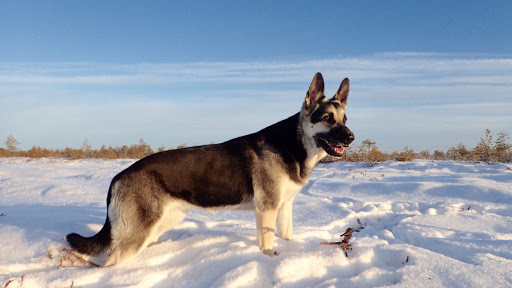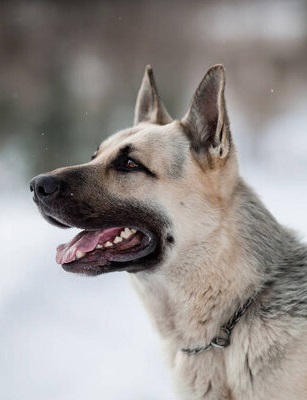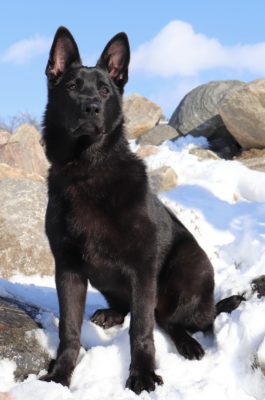East European Shepherd
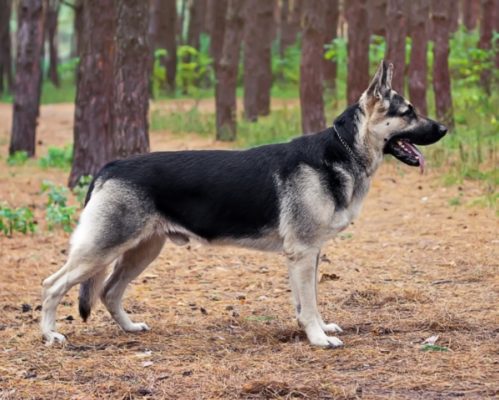
There is no dog equal in intelligence to the East European Shepherd. These intelligent animals participate in search and rescue teams, are used in service, and even act as guide dogs. They are easily trained for any task and are always very happy to interact with their owner. The temperament of the sheepdog is balanced, but they are also very agile. Because of their intelligence, sheepdogs always decide on their own how to act in different situations.
Table of Contents
Breed Information
| Another Name | Vostochno Evropeiskaya Ovcharka, VEO |
| Origin | Soviet Union |
| Height | Males 67-72 cm Females 62-67 cm |
| Weight | Males 35-60 kg Females 30-50 kg |
| Fur | Stiff and snug against the body |
| Color | Black and gray, black, black and red |
| Lifespan | 12-13 years |
| FCI Classification | Breeds outside the FCI classification |
| Group | Watchdogs |
| Price | From $200 |
Breed Photos
Origin History
The East European Shepherd appeared in the 1930s and 1950s. It was used in guard and escort service or the army, like most domestic service breeds.
The East European Shepherd is a valiant participant in the Great Patriotic War and is considered a true hero. The breed even took part in the parade in 1945 as an example of the bravest and most fearless dogs.
After the war, the number of sheepdogs decreased significantly. But already in the 60s, new breeding lines appeared. The animals began to be used as guide dogs and involved in service. In 1964 the first full-fledged breed standard was recognized by the Union of Cynological Organizations of Russia. However, the FCI refused to consider the East European Shepherd as an independent breed, considering it a separate updated branch of the German Shepherds.
Appearance
The sheepdog’s physique is muscular; the body is stretched. The back is very strong; the chest is broad and well expressed. The abdomen is moderately trim. The head is wedge-shaped, the muzzle is not pointed. The teeth are strong; the bite is scissor-shaped. The eyes are oval, of medium size, and set very wide. The ears of sheepdogs are standing, have a triangular shape with a rounded tip.
The limbs are parallel; the hind legs are pulled back. The hips look more muscular than the front ones. The tail is saber-shaped and curved. The undercoat is thick and soft; the hair is tough and close to the body. East European Shepherds can be black and gray, black and black and red.
Character
There is no dog equal in intelligence to the East European Shepherd. These intelligent animals participate in search and rescue teams, are used in service, and even act as guide dogs. They are easily trained for any task and are always very happy to interact with their owner. The temperament of the sheepdog is balanced, but they are also very agile. Because of their intelligence, sheepdogs always decide on their own how to act in different situations. This breed has participated in the filming of various movies, starring in episodes and major roles.
The shepherd treats children with incredible love. The dog can tolerate different pranks on their part, but it is better to control the process of play.
The East European Shepherd is distrustful of strangers. It will not be the first to show aggression, but rather stay wary and watch closely. Of course, in the case of a threat, the pet will act as a real protector and will be able to fight back.
Generally, their attitude toward other pets depends on the sex of the dog. They are generally calm towards cats or other dogs, especially if the acquaintance occurred in childhood.
Care
With its large size, the dog can get along even in an apartment. However, it will be most comfortable in an enclosure, with the possibility of constant physical activity. Representatives of the breed must walk at least three hours a day. An alternative to regular walks can be visits to special dog playgrounds or a body of water.
Comb your pet’s hair a couple of times every two to three weeks. During molting, it is worth doing it every day. It is worth bathing the sheepdog several times a year, as shampooing can damage the skin and coat. In summer, the East European Shepherd likes to bathe in bodies of water, but after that, you will have to wash it with a special shampoo. After a walk, it is enough to wipe the paws of the pet with a damp cloth. Clip his claws, brush his teeth once a week and keep an eye on his eyes and ears.
Training
The education of an East European Shepherd will be the most important point for the owner. It does not matter if the dog is purchased for the soul, exhibitions, or service – it is better to entrust it to a professional dog trainer. Modern training does not use punishment or raise the tone of the pet. Everything is based on reinforcing the result with a treat. It increases the pet’s motivation to correctly comply with the owner’s or dog handler’s demands.
By the age of one year, the dog should pass an obedience course to learn the street rules and at home. It is vital that the sheepdog knows the command “beside” and does not pull the leash.
Common Diseases
The East European Shepherd has good immunity. However, it is better not to leave the dog for a long time in a drought or the sun. Inspect your pet’s coat after a walk. Unfortunately, the breed is prone to ear infections. Proper care can prevent this problem. Get routine vaccinations and visit the vet as needed.
The East European Shepherd is prone to such diseases:
- stomach congestion;
- rickets or crooked limbs;
- enteritis;
- dysplasia of the hip and elbow joints.
Nutrition
Ask the breeder what he feeds his dogs.
It is worth enriching the diet with veal, turkey, or beef meat if it is a natural diet. Of the cereals, it is worth giving oatmeal, buckwheat, or rice. Vegetables and fruits will be a source of vitamins. It is better to limit the intake of dairy products for adult dogs.
 Thai Ridgeback
Thai Ridgeback German Pinscher
German Pinscher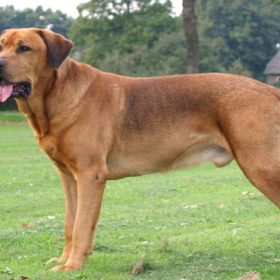 Broholmer
Broholmer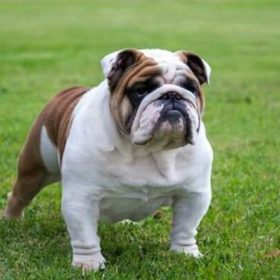 Bulldog
Bulldog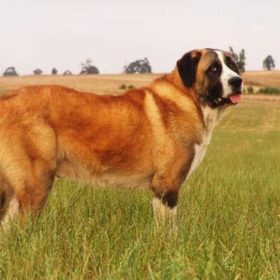 Rafeiro do Alentejo
Rafeiro do Alentejo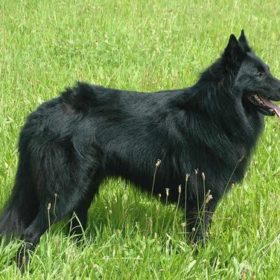 Belgian Shepherd Groenendael
Belgian Shepherd Groenendael